 It took a much shorter time to watch the Seth sequence play out than it did to read my analysis of it. However, it was an important and highly memorable scene.
It took a much shorter time to watch the Seth sequence play out than it did to read my analysis of it. However, it was an important and highly memorable scene.
The impact was necessary, even if we did have to rush through twenty-one different (and strategically unrealistic) time-lines to see it as a linear plot. Seth's sub-plot helps to underline the options open to Joe during the second part of the movie.
Some of these are actually used. For example, cutting yourself in the present day will leave your older self with a scar. Seth was left with an address etched into his arm, so was Joe.
Dismemberment, in any form, will result in your older self similarly being dismembered.
The Seth story raises a huge question - why didn't the Gatmen just kill the younger Seth, instead of mutilating him?
That's answered in Joe's second time-line. Because a looper's untimely death will result in the older, retired looper ceasing to exist too.
The time-line would just erase itself and place both Seths back into the courtyard at the execution scene. We would then be caught in a vicious causality cycle each lasting just a few hours. Seth runs; his younger self is killed. Seth runs; his younger self is killed. Seth runs, and so on.
Even in 2072, time-travel isn't an exact science. It was immediately out-lawed. Maybe nobody knows what would happen if the flexibility of time was so abused. Maybe they are too scared of the potential issues to find out.
Also the loop wouldn't be cleanly closed (according to the rules of the mob, not Physics now); and a bone fide murderer would have been created. Someone would have to kill the young looper, whose birth has been registered and who exists in that time-line.
Remember, until now, the victims are from the future, hence they don't necessarily exist in the past. Therefore their murder can't be prosecuted as murder. No official existence, no crime. Those making the rules are in the future, where killing is very problematic. They are making rules to deal with issues which similarly don't yet exist in the past.
Despite their jobs as assassins, the gangsters don't like to have murders on their hands which could possibly be treated as such by the courts.



 The Rainmaker ordered the deaths of the loopers.
The Rainmaker ordered the deaths of the loopers. 
 Yuan Zhao
on 01/17/2013
Yuan Zhao
on 01/17/2013


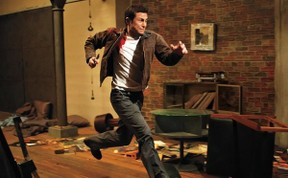 Where do we even begin here? The only real saving grace is that time repairs itself as unsustainable.
Where do we even begin here? The only real saving grace is that time repairs itself as unsustainable.

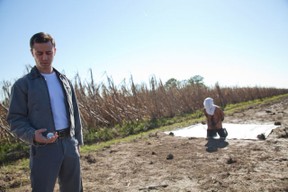 While there is still a chance that Joe 4 can kill Joe 3, then the older man still has his memories. Those thirty years can still play out.
While there is still a chance that Joe 4 can kill Joe 3, then the older man still has his memories. Those thirty years can still play out.
 In one of the most disturbingly brilliant, utterly memorable and apparently paradoxical sequences in the movie, we slip through at least twenty-one different time-lines to watch events play out.
In one of the most disturbingly brilliant, utterly memorable and apparently paradoxical sequences in the movie, we slip through at least twenty-one different time-lines to watch events play out.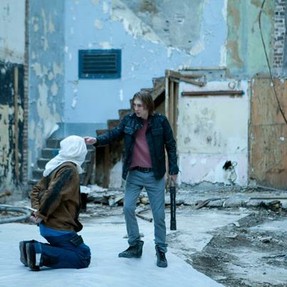 The big paradox here being that younger Seth could never have lived out the life that brought older Seth to the doorstep in the first place.
The big paradox here being that younger Seth could never have lived out the life that brought older Seth to the doorstep in the first place. It took a much shorter time to watch the Seth sequence play out than it did to read my analysis of it. However, it was an important and highly memorable scene.
It took a much shorter time to watch the Seth sequence play out than it did to read my analysis of it. However, it was an important and highly memorable scene.
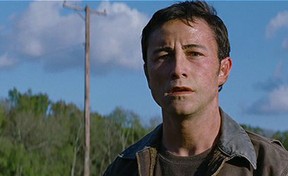 Many people have frowned at the ending - as spectacular and neat as it was - because they don't believe that it follows the movie's internal logic.
Many people have frowned at the ending - as spectacular and neat as it was - because they don't believe that it follows the movie's internal logic.
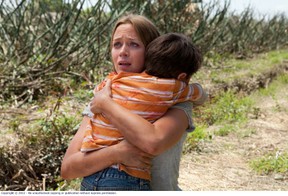 The Rainmaker was the biggest and scariest of the gangsters, but he wasn't the only one. A gun was put into Joe's hand before Cid was even born.
The Rainmaker was the biggest and scariest of the gangsters, but he wasn't the only one. A gun was put into Joe's hand before Cid was even born.

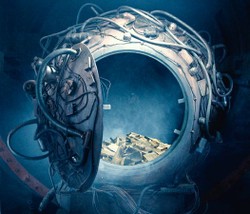
 St Tydecho's Churches in West Waleson 09/03/2014
St Tydecho's Churches in West Waleson 09/03/2014
 Goodies for an Outlander Premiere Partyon 03/06/2015
Goodies for an Outlander Premiere Partyon 03/06/2015
 Holocaust Memorial Day Interview with Rainer Höss, Grandson of Rudolf Architect of Auschwitzon 01/24/2015
Holocaust Memorial Day Interview with Rainer Höss, Grandson of Rudolf Architect of Auschwitzon 01/24/2015
 Romantic Valentine Gifts for an Outlander Fanon 01/16/2015
Romantic Valentine Gifts for an Outlander Fanon 01/16/2015

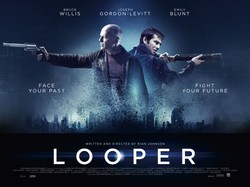

Comments
I really need to see this movie again, with your observations in mind. I think you're onto something here.
Imagine this is your dream - only you can change the outcome.
No other looper has the ability to change the outcome of the timeline.
Only one and that is Joe - therefore Joe must be Cid and the Rainmaker, changing the timeline like a bad dream till it comes out right!!!!!!!!!!!!!!!!!!!!!!!!!!!!!
I really like how you think. Like I said, I was almost there anyway, but you've filled in some blanks. I can see this as being the hidden sub-plot, most definitely. In fact, it would nicely tie up a paradox.
But wouldn't it be assumed that Joe already knew the farmhouse and Sara. Older Joe also wouldn't need to go on a baby slaughtering mission, in order to track down the infant rainmaker.
I also wondered about Abe's younger self. For much of the film, I assumed that it was Kid Blue, but then it couldn't have been.
So if the his supposed mom taught him how to control his powers than Joe could be Cid.
But his mom is not his mom as the boy says. He is too smart not to know the truth, smart enough to make a timemachine in the future?
Knowing his true path he returns as Joe with Abe to the past?
Abe found him on the street and put a gun in his hand - perhaps brought him back from the future also?
Where is Abe's past self?
Knowing Joe's first path he returns to fix the future again?
You know, I spent a lot of this movie convinced that Joe was the Rainmaker, then shifted that view with the introduction of Cid. Even then, I briefly thought that Cid was Joe as a kid, until the whole telekinesis storyline kicked in. Are you suggesting that I should have run with that one?
I hadn't noticed the dirt on the shoes/not on the shoes thing, nor the baby crying. I so need to see this movie yet again! Would you elaborate please?
I love your conclusion. That is even more delicious than my own!
Other elements?
The rainmaker has never been seen in the future does he exist?
The dirt on the shoes as opposed to Joes clean shoes as noticed by the boy.
The boys future certainly looks like Joes as invisioned my him.
The baby crying?
The rainmaker is Joe and experimenting with his own timeline to fix the future replaying it over and over till he gets it right.
The conundrum of the loop.
I would definitely, definitely recommend it. I need you to watch it, in fact! Then we can discuss it!
Having not read too far into this article it's certainly persuaded me to watch it!